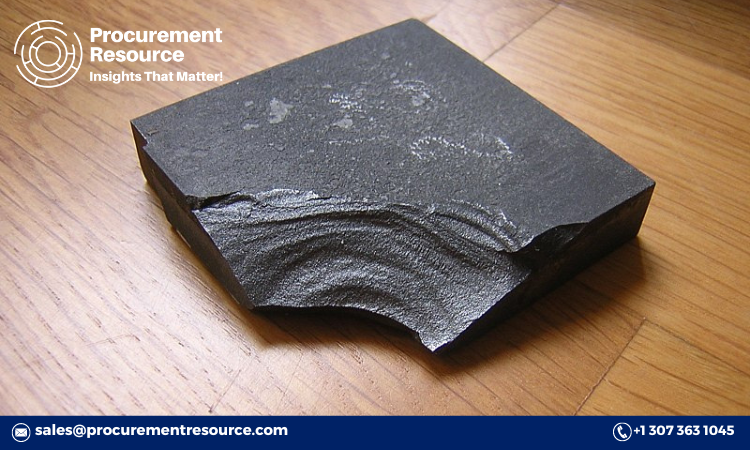
Boron carbide (B4C) is a highly sought-after material known for its exceptional hardness and wear resistance. It is widely used in various industrial applications, including abrasives, refractories, and armor plating. Understanding the production cost of boron carbide is essential for businesses looking to invest in its manufacturing or for industries relying on this material for their processes. This report delves into the intricacies of boron carbide production cost, highlighting the manufacturing process, raw material costs, and the latest news in the industry.
Manufacturing Report and Process
The production of boron carbide involves a series of complex processes that require precision and high-quality raw materials. The manufacturing process can be broadly divided into the following stages:
- Raw Material Preparation: The primary raw materials for boron carbide production are boric acid (H3BO3) or boron oxide (B2O3) and carbon sources like petroleum coke or carbon black. These materials are thoroughly cleaned and prepared to ensure purity.
- Mixing: The boron and carbon sources are mixed in a specific stoichiometric ratio to ensure the correct chemical composition of boron carbide. The mixture is often subjected to high-energy milling to achieve a fine and uniform powder.
- Carbothermic Reduction: The mixture is then heated in a high-temperature furnace (typically above 2000°C) in an inert or reducing atmosphere. This process, known as carbothermic reduction, facilitates the reaction between boron oxide and carbon, resulting in the formation of boron carbide.
- Cooling and Crushing: After the reduction process, the material is cooled and subsequently crushed into the desired particle size. This step is crucial for achieving the right granularity for different applications.
- Purification: The produced boron carbide may contain impurities that need to be removed. This is typically done through acid washing or other chemical treatments to enhance the purity of the final product.
- Sintering and Forming: Depending on the intended use, the boron carbide powder can be sintered to form solid shapes or consolidated into various forms such as pellets, rods, or plates. Sintering involves heating the powder just below its melting point to achieve densification.
The efficiency and cost-effectiveness of each of these stages significantly influence the overall production cost of boron carbide.
Request For Sample: https://www.procurementresource.com/production-cost-report-store/boron-carbide/request-sample
Raw Material Costs
The cost of raw materials is a significant component of the overall production cost of boron carbide. The primary raw materials, boric acid or boron oxide and carbon sources, vary in price based on factors such as purity, availability, and market demand.
- Boric Acid/Boron Oxide: The price of boric acid and boron oxide fluctuates based on supply and demand dynamics in the global market. High-purity boric acid, required for boron carbide production, commands a premium price.
- Carbon Sources: Petroleum coke and carbon black are the preferred carbon sources. Their prices are influenced by the petroleum industry’s market conditions and the overall demand for these materials in various applications.
- Energy Costs: The carbothermic reduction process requires high temperatures, making energy costs a substantial part of the production cost. The efficiency of the furnace and the type of energy used (electricity, natural gas, etc.) impact these costs.
- Labor and Overhead: Skilled labor is essential for handling the high-temperature processes and ensuring quality control. Labor costs, along with overhead expenses such as maintenance of equipment and facilities, contribute to the total production cost.
Understanding the cost structure of these raw materials and their market trends is crucial for optimizing production costs and ensuring competitive pricing for boron carbide.
Latest News
Keeping abreast of the latest developments in the boron carbide industry is vital for staying competitive and informed about market trends, technological advancements, and regulatory changes. Here are some recent news highlights:
- Technological Innovations: Advances in production technology, such as improved carbothermic reduction methods and more efficient purification processes, are helping reduce production costs and enhance the quality of boron carbide. Researchers are continuously exploring new ways to optimize the manufacturing process.
- Market Demand: The demand for boron carbide is on the rise, driven by its applications in defense, nuclear, and industrial sectors. Recent geopolitical tensions and increasing investments in defense have boosted the demand for armor materials, including boron carbide.
- Sustainability Initiatives: There is a growing focus on sustainable and eco-friendly production methods. Companies are exploring ways to reduce the environmental impact of boron carbide production, such as utilizing renewable energy sources and implementing waste recycling processes.
- Regulatory Changes: Changes in environmental regulations and safety standards are influencing the boron carbide industry. Manufacturers must comply with stringent regulations to minimize emissions and ensure worker safety, impacting production costs.
- Global Supply Chain: The global supply chain disruptions caused by events such as the COVID-19 pandemic have affected the availability and cost of raw materials. Companies are now looking for ways to secure their supply chains and mitigate risks associated with such disruptions.
- Market Players: Major players in the boron carbide market are investing in expanding their production capacities and enhancing their R&D capabilities. Collaborations and mergers are also shaping the competitive landscape, influencing market dynamics and pricing strategies.
Conclusion
The production cost of boron carbide is influenced by various factors, including the efficiency of the manufacturing process, the cost of raw materials, and market dynamics. By understanding these elements, businesses can make informed decisions to optimize their production processes and stay competitive in the market. Keeping track of the latest industry news and developments is crucial for adapting to changes and seizing new opportunities in the boron carbide market.






